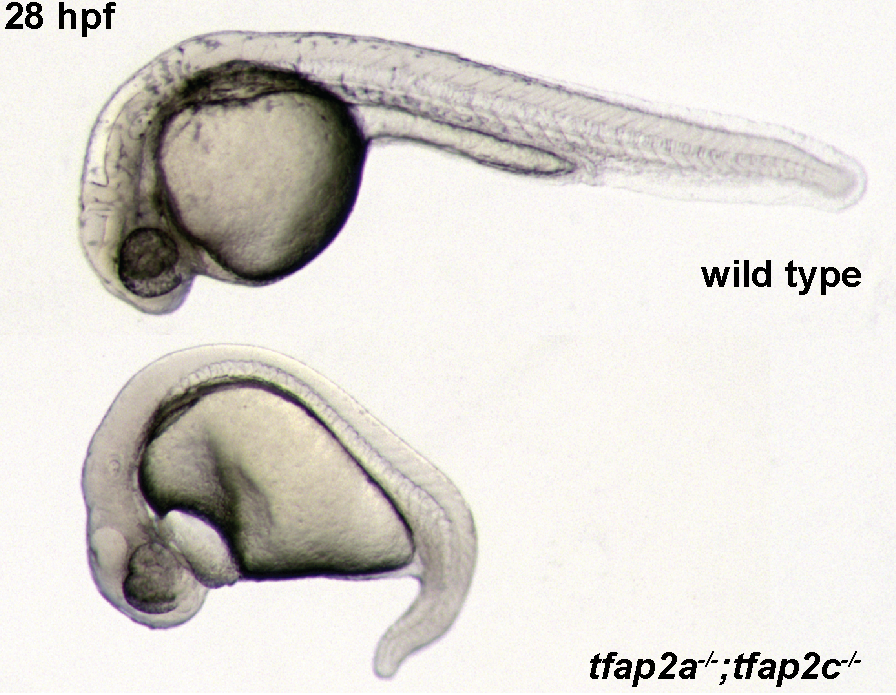Discover and read the best of Twitter Threads about #zebrafish
Most recents (23)
[Announcement]
Opportunity for collaboration (shelf-screen) in Kawakami lab
Dear #zebrafish researchers,
My lab has generated more than 2,000 transgenic fish lines that express Gal4 in specific organs, tissues and cells, which should be potentially useful for many purposes. (1/n)
Opportunity for collaboration (shelf-screen) in Kawakami lab
Dear #zebrafish researchers,
My lab has generated more than 2,000 transgenic fish lines that express Gal4 in specific organs, tissues and cells, which should be potentially useful for many purposes. (1/n)
You may look at these expression patterns partly on the web database (kawakami.lab.nig.ac.jp/ztrap/). Since the database contains only a couple of side-view images that were taken by a stereoscope. If you are interested in particular expression patterns, I want you to visit my lab(2/n)
perform "shelf-screen", look at them by your eyes more precisely, and find lines that are potentially useful for your research. The "shelf-screen” has been suspended because of the pandemic, but now it is opening. (3/n)
Does adaptation to stable temperatures lead to a loss of physiological plasticity?🌡
In our new paper @PNASNews we explore this by comparing lab (150+ generations in stable conditions) and wild (fluctuating temperatures in nature) #zebrafish🐟1/7 pnas.org/doi/10.1073/pn…
In our new paper @PNASNews we explore this by comparing lab (150+ generations in stable conditions) and wild (fluctuating temperatures in nature) #zebrafish🐟1/7 pnas.org/doi/10.1073/pn…

We acclimated both lab and wild zebrafish to 15 different temperatures from 10-38 degrees for 35 days. 2/7 

Then we measured a diverse range of traits spanning gene expression, behaviour and physiology. 3/7
A longstanding question in cancer: why do tumors only form in certain locations in the body? In our new @nature paper (nature.com/articles/s4158…), we define anatomic position of the cell as a mechanism for this.
Led by Josh Weiss (@Joshua_M_Weiss), we found that melanomas that arise in different parts of the body have different DNA alterations. These DNA alterations only cause cancer if they synergize with the intrinsic positional gene program present in these different anatomic sites.
A great News and View summary of the paper written by Marisol Soengas (@msmelanoma) and Chris Marine (@lab_marine): nature.com/articles/d4158…. Thanks to both of you for your insight and perspective.
I am very excited to introduce Interleukin-11 signaling as a global regulator of regeneration @ScienceAdvances! Huge thanks to @ReischauerS’s supervision and the co-authors for their support!
#regeneration #scarring #zebrafish
A thread. 1/n
#regeneration #scarring #zebrafish
A thread. 1/n
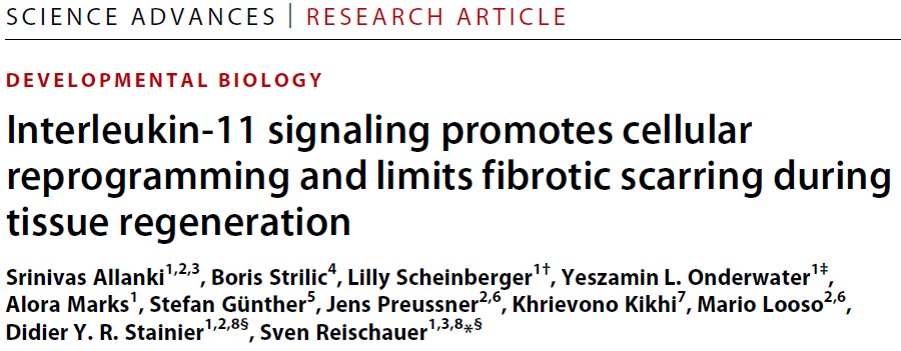
Regeneration and scarring are the opposing endpoints after tissue damage. Mammals predominantly mount a fibrotic response, a root cause of many diseases. In contrast, cells in regenerative species undergo reprogramming, initiating a regenerative gene program. 2/n
Vector-based SARS-CoV2 #vaccines have been associated with vaccine-induced thrombotic thrombocytopenia #VITT/#TTS. It is known that similar to HIT, anti-PF4 antibodies are formed which activate platelets therefore eventually leading to serious thrombosis: nature.com/articles/s4158… 
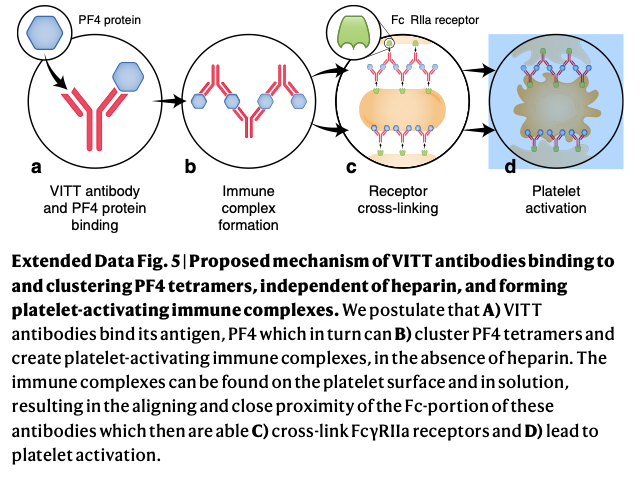
This serious and sometimes fatal condition has been described for both vector-based SARS-CoV2 vaccines ChAdOx1 nCoV-19 (AstraZeneca) and in less frequency for Ad26.COV2.S (Johnson&Johnson). However, it is still unclear why there are large differences in the incidence of #VITT.
To tackle this question, we dropped everything else and compared both vaccines in our local, highly interdisciplinary multi-expertise group from @uni_greifswald, @UMGreifswald and @Loeffler_News: #GreifswalderForscher
We just updated our preprint, reporting a novel single-objective #lightsheet design that is capable of imaging large samples, with a large imaging volume, uncompromized image resolution and speed, and multi-view imaging. (1/9)
doi.org/10.1101/2020.0…
doi.org/10.1101/2020.0…
Thanks to @DrLachie, now we have a visual abstract which explains how the microscope works. First half of the movie below. (2/9)
Second half of the visual abstract by @DrLachie (3/9)
I'm thrilled to share our story about the cellular crosstalk in the developing heart, regulated by TGF-β from the endothelial cells. Below more details and some beautiful #zebrafish hearts ⬇️. Coincidentally, it was out @elife exactly on #WorldHeartDay! ❤️elifesciences.org/articles/57603 

When we mutated tgfbr1/alk5 in zebrafish, we found a very specific dilation of the cardiac outflow tract (OFT), resembling mammal aortic aneurysms...while all the other vessels and the heart looked unaffected. Occasionally, we even found ruptures and holes in the OFT!
I am #grateful for the opportunity given by #IWS_Network to share my story, struggles and success in the voices without frontiers (VWF).
My name is Betelhem, most people call me Betty and I prefer it that way. I was born 27 years ago to a young couple in AddisAbeba, the capital of #Ethiopia. #IWSVoices 1/n 

My mom and me rather look like sisters. Despite being a teenager when she got me, she sacrificed her whole life to raise me up. She made sure I had the best #education possible. I am forever grateful to my mom sis & do everything to make her and God #proud. #IWSVoices 2/n 

Join us @ZDMSociety on Sept 8 for the Virtual Seminar "Developmental Mechanisms of Cardiovascular Anomalies"!
Excited to talk w/ @whitefishlab, @vg_biomarina & @noelresearchlab about #zebrafish, cardiovascular #devbio & disease. #CHD
*2020 ZMDS membership/registration is FREE!*
Excited to talk w/ @whitefishlab, @vg_biomarina & @noelresearchlab about #zebrafish, cardiovascular #devbio & disease. #CHD
*2020 ZMDS membership/registration is FREE!*

The Virtual Seminars continue through Dec with topics spanning xenografts, host-pathogen interactions, blood (featuring @ritafior @LabBerman @ValerieWittamer and more... 

...therapeutic target identification, and cancer (featuring @TheBlackburnLab and more!).
Sign up, and enjoy #zebrafish disease modeling from your favorite chair, sofa, porch, etc.
Sign up, and enjoy #zebrafish disease modeling from your favorite chair, sofa, porch, etc.

The 1st paper from my thesis is up on @biorXivpreprint!
Main question: how do skin cells know when (and where) injury has occurred nearby?
A 🧵 about how #zebrafish embryos sense wounds via osmotic AND electric cues, with plenty of cool movies! (1/12)
biorxiv.org/content/10.110…
Main question: how do skin cells know when (and where) injury has occurred nearby?
A 🧵 about how #zebrafish embryos sense wounds via osmotic AND electric cues, with plenty of cool movies! (1/12)
biorxiv.org/content/10.110…
🦓🐟 skin cells respond to wounds FAST: within seconds after injury, cells 100s of microns away start reacting. How do they know so quickly?
(Most movies in this 🧵 are of LifeAct-GFP in the basal cell layer of the embryonic tailfin, reacting to a wound to the right.) (2/12)
(Most movies in this 🧵 are of LifeAct-GFP in the basal cell layer of the embryonic tailfin, reacting to a wound to the right.) (2/12)
One way (that was previously known): because 🦓🐟 are freshwater fish, injury = hypotonic shock. After wounding, dilute outside fluid mixes with salty inside fluid, cells swell up, and thereby detect the wound. See this side view of cells expressing plasma membrane GFP. (3/12)
Honored & grateful to receive the @ZDMSociety award in these trying times.
The award also recognizes our amazing international trainees using #zebrafish #devbio as cardiovascular disease model, first @UZH_en & now @CUAnschutz - and our fantastic collaborators!
Thx all🍾🐟!
The award also recognizes our amazing international trainees using #zebrafish #devbio as cardiovascular disease model, first @UZH_en & now @CUAnschutz - and our fantastic collaborators!
Thx all🍾🐟!
Special shout-out to @FelkerAnastasia @karin_prummel @aburger2009, our collaborators @ClaudioCantu81 @d_zimmerli @KevinMMA13 @DanielaPanakova @PanakovaLab @George_Hausmann and all who were part of our BCL9 work cited in the award:
genesdev.cshlp.org/content/32/21-…
genesdev.cshlp.org/content/32/21-…
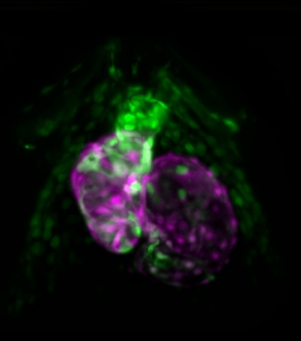
...and thx to all our current lab members @CUAnschutz, many on visas, not all on Twitter - onwards always:
@hannah_moran @AKocere @aburger2009
@hannah_moran @AKocere @aburger2009

Slight change in schedule! Today I'll be revealing answers to the #zebrafish quiz and sharing a bit more about my research 🐟👩🏿🔬 Keep sending in your questions!
We'll get back to race in science/medicine on Saturday 👀
We'll get back to race in science/medicine on Saturday 👀
The answer is South (East) Asia! Especially in the Himalayan region. Zebrafish are freshwater fish so they're found in rivers etc, not in the sea! The scientific name for zf is Danio rerio. Danio comes from the Bangla word for "of the rice field" (dhani)
Most of you got this right. Even though the last common ancestor between zebrafish/humans was >400 million years ago, we still share 70% of genes. Evolution is slow! This is great for biologists because we can study genes with human relevance in zebrafish
Today, we officially welcomed (via Zoom) our latest postdoc to the lab: Robert Lalonde!
Excited to have Rob with us @CUAnschutz to decipher mesodermal cell fate control.
Current lab pic:
#zebrafish #PILife #PDLife #WFH #mosimannlabgoesvirtual
Excited to have Rob with us @CUAnschutz to decipher mesodermal cell fate control.
Current lab pic:
#zebrafish #PILife #PDLife #WFH #mosimannlabgoesvirtual

...and also, Jelena (still in Switzerland) got her lab notebook computer delivered for enhanced #WFH :).
(not shown, reactions to me testing out new microphone settings that caused more head/earache than improvement) #lofi #Zoomedout
Kicking off concurrent sessions #TAGC20, "Genetic Control of Development and Regeneration (#Zebrafish)!
@zoom_us tested for all speakers, @snillum1 & I will guide Q&A, 400+ attendees logged in, and go!
@zoom_us tested for all speakers, @snillum1 & I will guide Q&A, 400+ attendees logged in, and go!
First talk by Daniel Zuppo (Tsang lab, UPittsburg) on foxm1 in proliferating cardiomyocytes upon heart injury.
Trx factors & beautiful stainings, what's not to ❤️!
#ZFish20
Trx factors & beautiful stainings, what's not to ❤️!
#ZFish20
Next up, Wei Wang @Planaria1 @ScienceStowers on enhancers, their conservation (or lack thereof), and the variations in regenerative capacities in vertebrates.
Killifish transgenics tested in regeneration assays!
#ZFish20 #Killifish20?
Killifish transgenics tested in regeneration assays!
#ZFish20 #Killifish20?
#Zebrafish folks and beyond, join us - free from your living room, home office, bed, etc.!
Wed April 22 at 1:30pm-3:30pm (EDT), @snillum1 & I are looking forward to chair "Genetic Control of Development and Regeneration" (#Zebrafish):
app.genetics-gsa.org/tagc/abstracts…
app.genetics-gsa.org/tagc/abstracts…
Thu April 24 at 3:45 pm-5:45 pm, I'm honored to present our latest #zebrafish work on cell fates of the lateral plate mesoderm and mesothelial origins using scRNA-seq, SPIM, et al, led by @karin_prummel w/ @markrobinsonca @CrowellHL @CSoneson and more!
app.genetics-gsa.org/tagc/abstracts…
app.genetics-gsa.org/tagc/abstracts…
Hi folks, I want to chat a bit about #zebrafish emergency preparedness. I'm just a lowly registered vet tech, but I'd like to share some insight about what we need to do to ensure the health and welfare needs of our animals are met...
First and foremost, room checks are essential and need to be done daily. This means checking the room is normal and the life support system is working as intended. Redundancies and alarm systems must be tested now (but should be tested on a regular basis)...
and a very detailed (add photos!) guide on how to check the room(s) must be created. Check if your system allows for remote monitoring, and get your home VPN etc set up. Consider a webcam if there's no other option?
This project, started with totally different aims, taught me that in every story there is something more, if you have the curiosity and the patience to look for it.
Intercellular communication regulated by TGFß in the #zebrafish cardiac outflow tract.⬇️ biorxiv.org/content/10.110…
Intercellular communication regulated by TGFß in the #zebrafish cardiac outflow tract.⬇️ biorxiv.org/content/10.110…
Impossible without the help, the discussions and the input of my amazing colleagues! #stainierlab
Thanks especially to @BensimonBrito and all the other coauthors!
Thanks especially to @BensimonBrito and all the other coauthors!
@BensimonBrito I rarely saw such a specific effect of the mutation as in alk5 mutants' outflow tract. And the zebrafish beating heart is always a pleasure to image! 😍
We have two papers out this week!
The first is @PLOSGenetics doi.org/10.1371/journa… on gene regulatory networks during neural crest differentiation in #zebrafish. Some highlights: (1/10)
#Euroglia 2019 in #Porto (PT) has just published the Meeting Program.
Very much looking forward to be there! #GliaMeeting #NetworkGlia #glia
glia2019.eu/_medien/_conte…
Very much looking forward to be there! #GliaMeeting #NetworkGlia #glia
glia2019.eu/_medien/_conte…
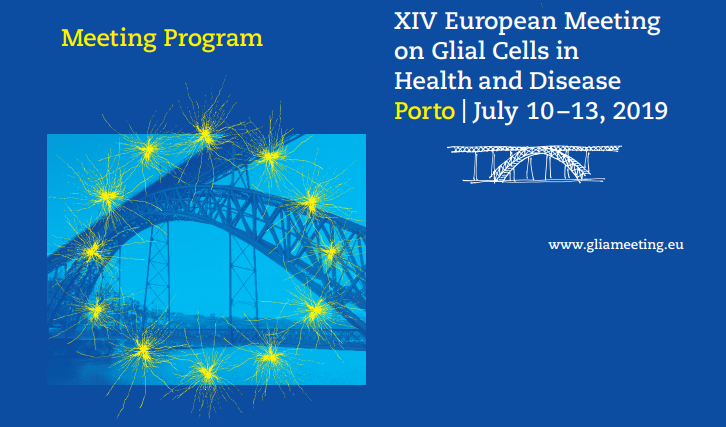
New in this edition:
To promote interactions between speakers and attendants, the program includes a session called “meet the speakers”. The sessions will take place during the lunch breaks from Thursday to Saturday; glia2019.eu/?s=meet-the-sp…
To promote interactions between speakers and attendants, the program includes a session called “meet the speakers”. The sessions will take place during the lunch breaks from Thursday to Saturday; glia2019.eu/?s=meet-the-sp…

What about the Posters in #Euroglia 2019 ?? 
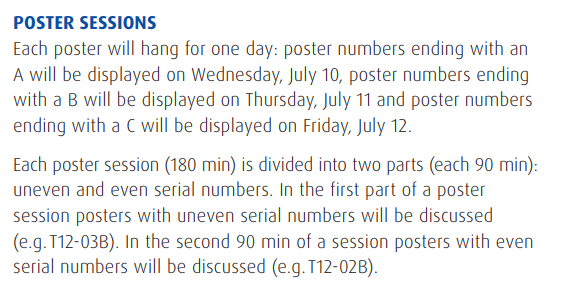
#zebrafish tweeps - at the PI meeting this year, we had a very heated discussion about using F0 "crispants" as data in publications. Some felt these would be as bad as MO and less easy to control (off-target issues, multiple insertions/deletions, etc). /1
Others felt they were ok for seeing if you were on the right track with something, but that you would need to make the stable line regardless. Either the support for F0 crispant data was silent and drowned out by the negatives. Or there wasn't any support. /2
Now we have a reviewer requesting multiple "crispants" as additional data for a manuscript. Given the discussion at the PI meeting, I'm reluctant to agree to this, in part because it would reflect poorly on us to publish something considered poor science. /3
I was born and raised in the beautiful city of #Curitiba, southern #Brazil!
This region is famous for being cold and cloudy (yes it can be cold in Brazil!).
It is also famous for its very endemic and beautiful #Araucaria pine trees. #voicesIWS @IWS_Network @500womensci /1
This region is famous for being cold and cloudy (yes it can be cold in Brazil!).
It is also famous for its very endemic and beautiful #Araucaria pine trees. #voicesIWS @IWS_Network @500womensci /1
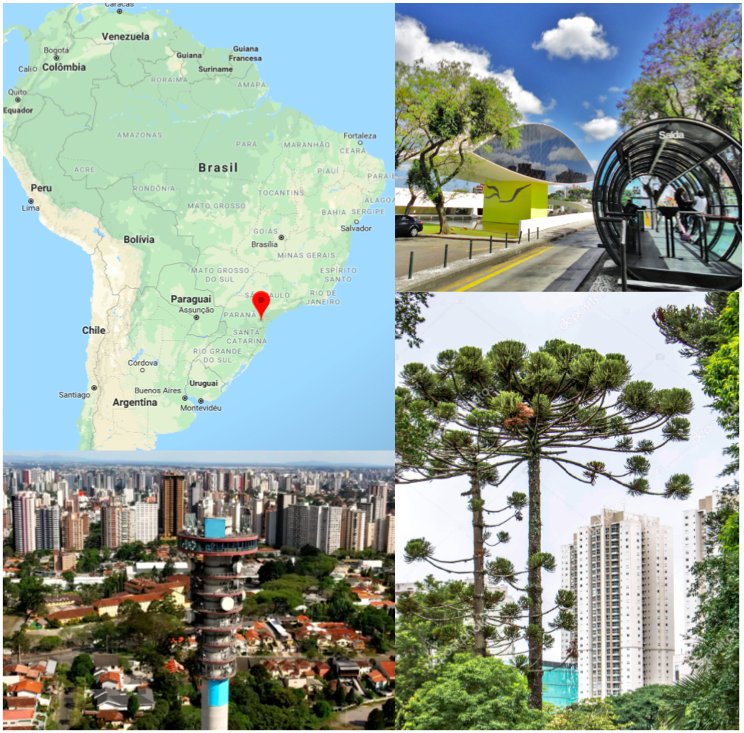
#Actions speak louder than words! I am thankful for my parents for being who they are. Both always showed love for Nature, different interests and #curiosity! So no wonder by observing them I grew up to be a very curious girl who really loved Nature. #voicesIWS @IWS_Network /2
During High School I became fascinated by the #mendelian #genetics classes and the work of #gregormendel! I also loved studying animals, ecosystems and climate so the obvious choice for me in University (@PUCPR_oficial ) was BIOLOGY!! @IWS_Network #womeninscience #voicesIWS /3
Neural ensembles are groups of co-active neurons that may be triggered spontaneously, by sensory stimuli or behavior. Such ensembles are therefore likely to constitute the building blocks of brain function, but little is known about their structure, organization and dynamics.
Studying neural ensembles relies on our ability to identify them. Unlike existing methods, @Giovann82176354 provides a model based approach that uses Bayesian inference techniques to obtain probabilistic estimates of the number, composition and dynamics of neural ensembles.
By applying this method my 2-photon volumetric recordings of spontaneous activity in the optic tectum we recover the structure of multiple spatially compact ensembles spanning multiple imaging planes. (note: this visualization was controlled by a Nintendo 64!)
✂️🐟🎉🏀 Hey everyone, @Science_Baller here! I'll be the guest host today talking about all things #STEMed #scioutreach #scicomm and #CRISPR today! Jump with questions at any time and I'll try to answer them! It's going to be a #zebrafishparty and I'm pumped! 😎
A little about myself: I am a new lecturer in Biological Sciences @VanderbiltU . I teach a section of Introductory Bio (220 students) and 3 sections of Intro Bio Lab (16 students/each). What's the biggest course you have had to teach? #STEMed #AcademicTwitter #phdlife #phdchat
I graduated with my Ph.D. in Biochemistry in May from @RiceUniversity . My research focused on #zebrafish genetics using #CRISPR mutagenesis. My big paper discussed a new #CRISPR tool that we developed which has an increased mutation rate+longer deletions onlinelibrary.wiley.com/doi/pdf/10.100…


